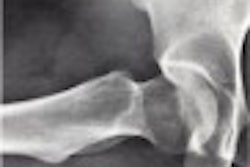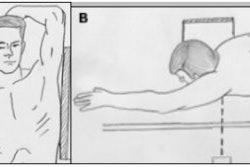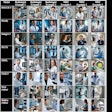|
Radiologists find RPAs to be vital link
From a radiologist’s perspective, the RPA position has successfully bridged the gap between radiologist and technologist. As exam volumes increase, reimbursement dwindles, and well-trained radiologists remain scarce, the RPA becomes a viable and cost-effective means of increasing efficiency. But that’s not all. Our experience has been one of enhanced income opportunities, improved patient satisfaction, and streamlined workflow; all the result of a single RPA. As indicated in the main story, there are four main benefits of RPAs to radiologists:
With the addition of our RPA, I am able to do the work of at least 1½ radiologists each day. In essence, an RPA can successfully perform a significant portion of the duties traditionally requiring a physician, allowing the radiologist to perform more of the duties absolutely requiring a physician. We cover eight small community hospitals with all images sent to our central community hospital via PACS. We plan on adding two more RPAs in the next year to obviate the need of a radiologist performing GI procedures and arthrograms at our outlying facilities. This will result in significant timesavings to us in both travel time and time performing the procedures. The success of any physician extender venture is dependent on the relationship. Trust based on quality performance of procedures by the RPA must be developed. This necessitates that the RPA aspire to a level of excellence. On a personal note, James Abraham (see feature article) is our RPA and my right-hand man. A testament to his importance in our practice is clearly apparent when he is on vacation. Many procedures are put on hold and the schedule is kept as light as possible. Upon his return, we sigh with relief and vow to never allow him to take another vacation. In summary, the RPA is a welcome wave of the future in radiology. Certainly, its success will be gauged on its practitioners; in our experience, the position’s future is assured. We have found the RPA to be a colleague to the radiologist, a mentor to the radiologic technologist, a facilitator to the nurse; and an expeditor to the scheduler; but most of all, a comforter to the patient. Dr. Hugh B. CecilNorthwest Imaging Kalispell, MT Radiologist credits RPAs for improved patient care
RPAs are fast becoming a reality in the current radiology practice environment. To date, our experience has been positive with regards to improvement in daily workload and efficiency. In our practice the improvement has been achieved in the special procedures area, where Mr. Abraham has been a high-end technologist for many years. The RPA training program has given him the opportunity to expand his skills and perform various procedures, many of which were previously considered outside his scope of practice as a technologist. As noted in the article, the amount of work required both prior to, and following, an interventional procedure is significant and affects patient care. In our case, the use of an RPA has been like adding half a radiologist position. This addition has greatly improved the general level of patient care where, in an understaffed, busy practice, inefficiencies waste valuable time. Furthermore, in today’s age of remote interpretation, an RPA may provide benefits through the performance of limited procedures remotely such as upper GIs, barium enemas, and arthrograms. As regards the potential negative impact of RPAs on a radiology practice, we have found none. The scope of practice being instituted at the state level and the exclusion of interpretation privileges has made James an important ally as opposed to a competitor. Overall, the RPA is welcomed in our practice and will have a positive impact on radiology in the future. By William R. BenedettoBoard Certified Radiologist Northwest Imaging Kalispell, MT |
Radiologist credits RPAs for improved patient care
Oct 23, 2003
Latest in Radiologic Technologist
Calif. amends Radiologic Technology Act
October 15, 2025
Mayo Clinic expands radiography technologist program
September 23, 2025
Edcetera buys Pulse Radiology Institute
August 20, 2025
How are technologists dealing with higher vacancy rates?
August 8, 2025



















